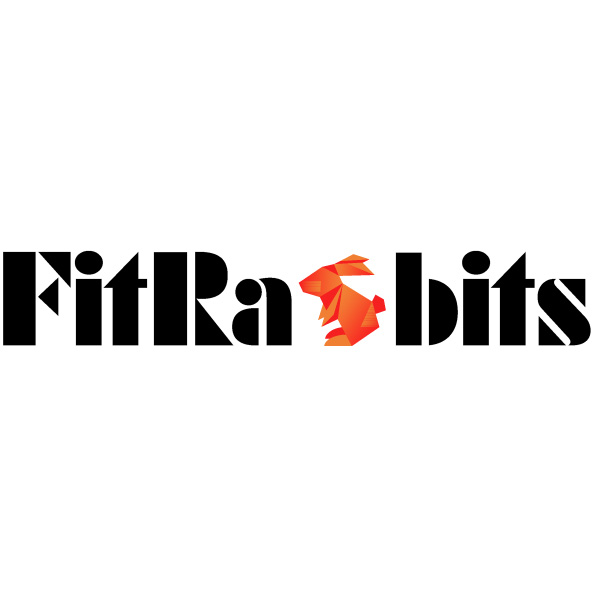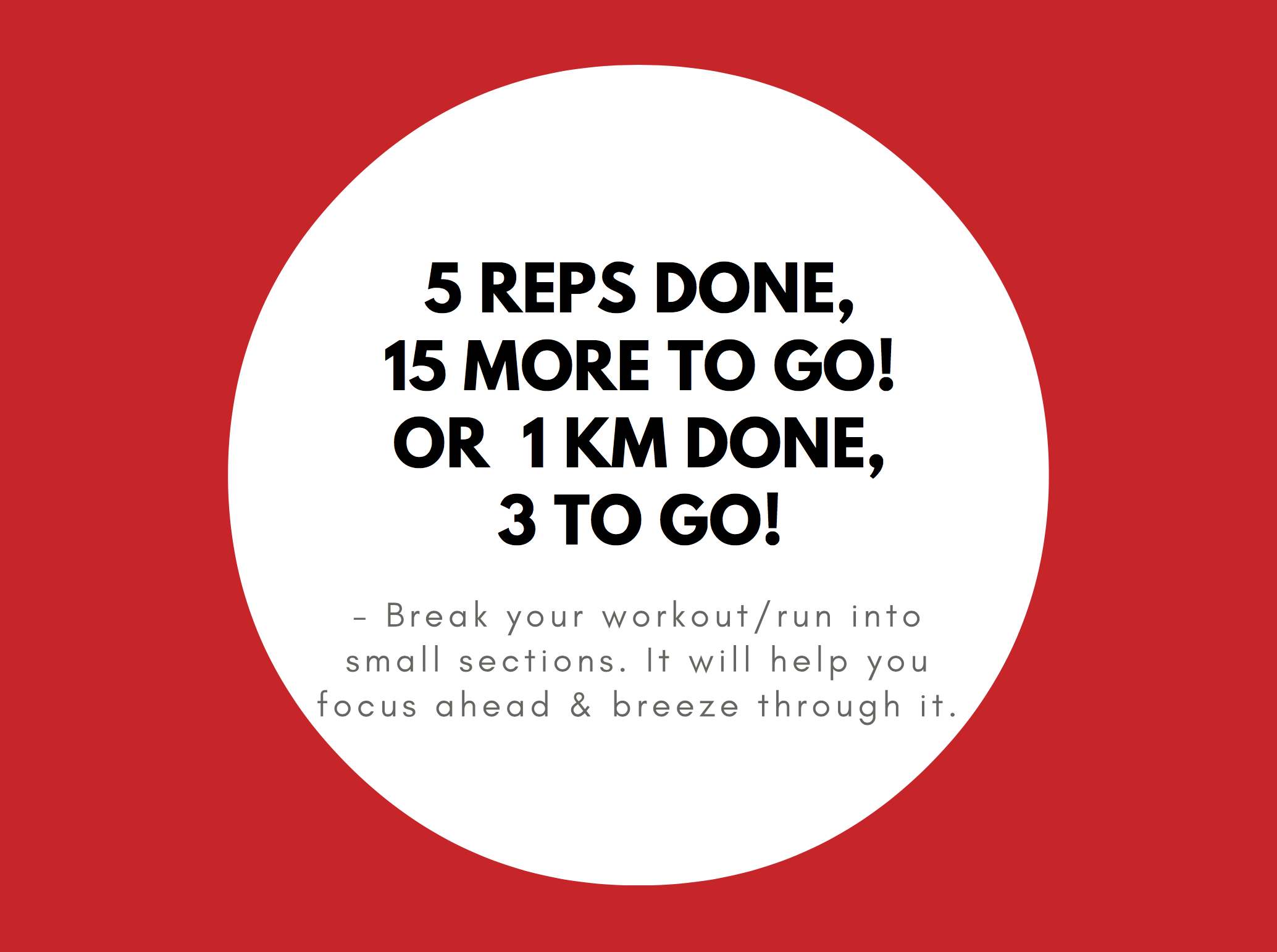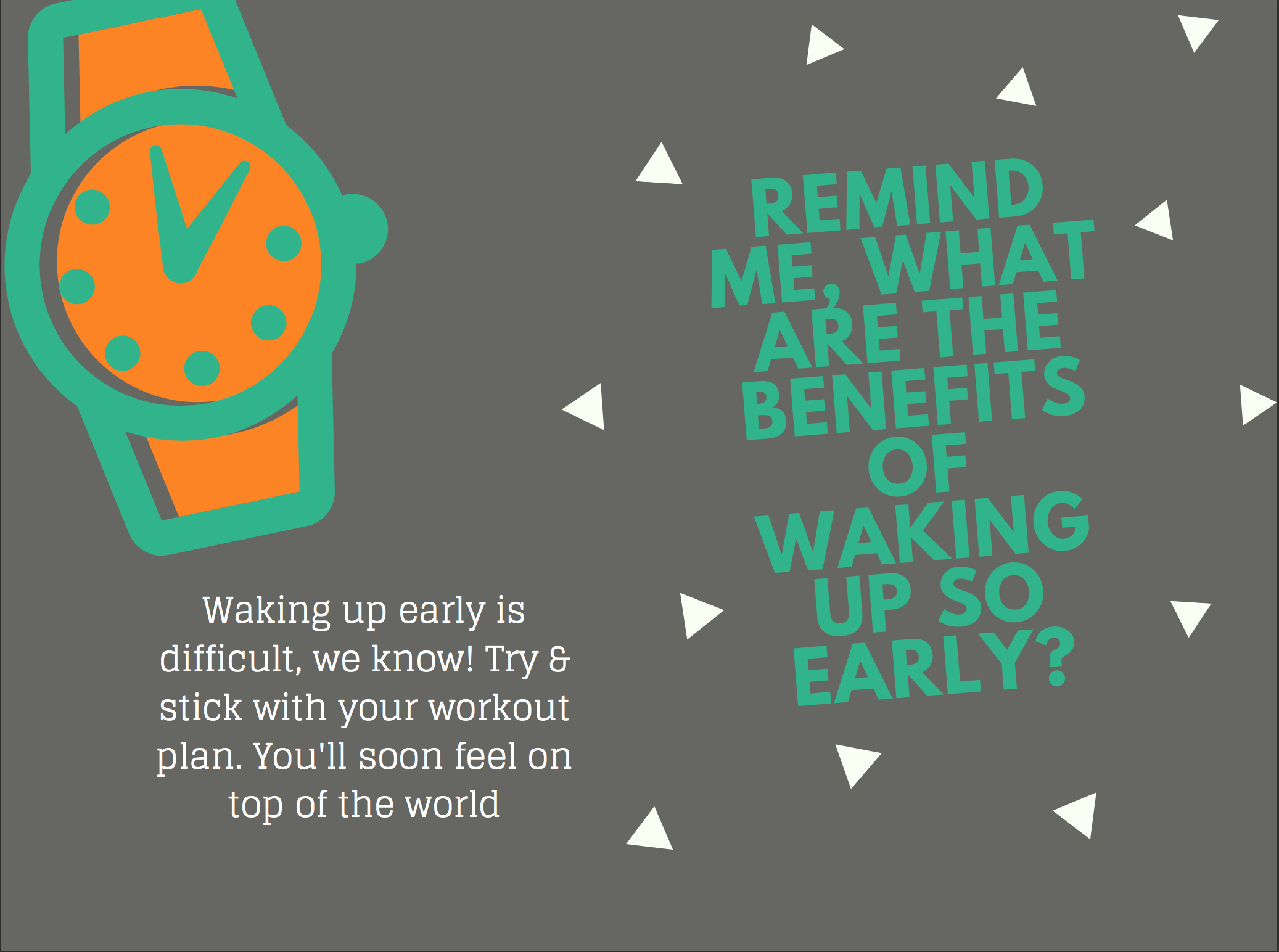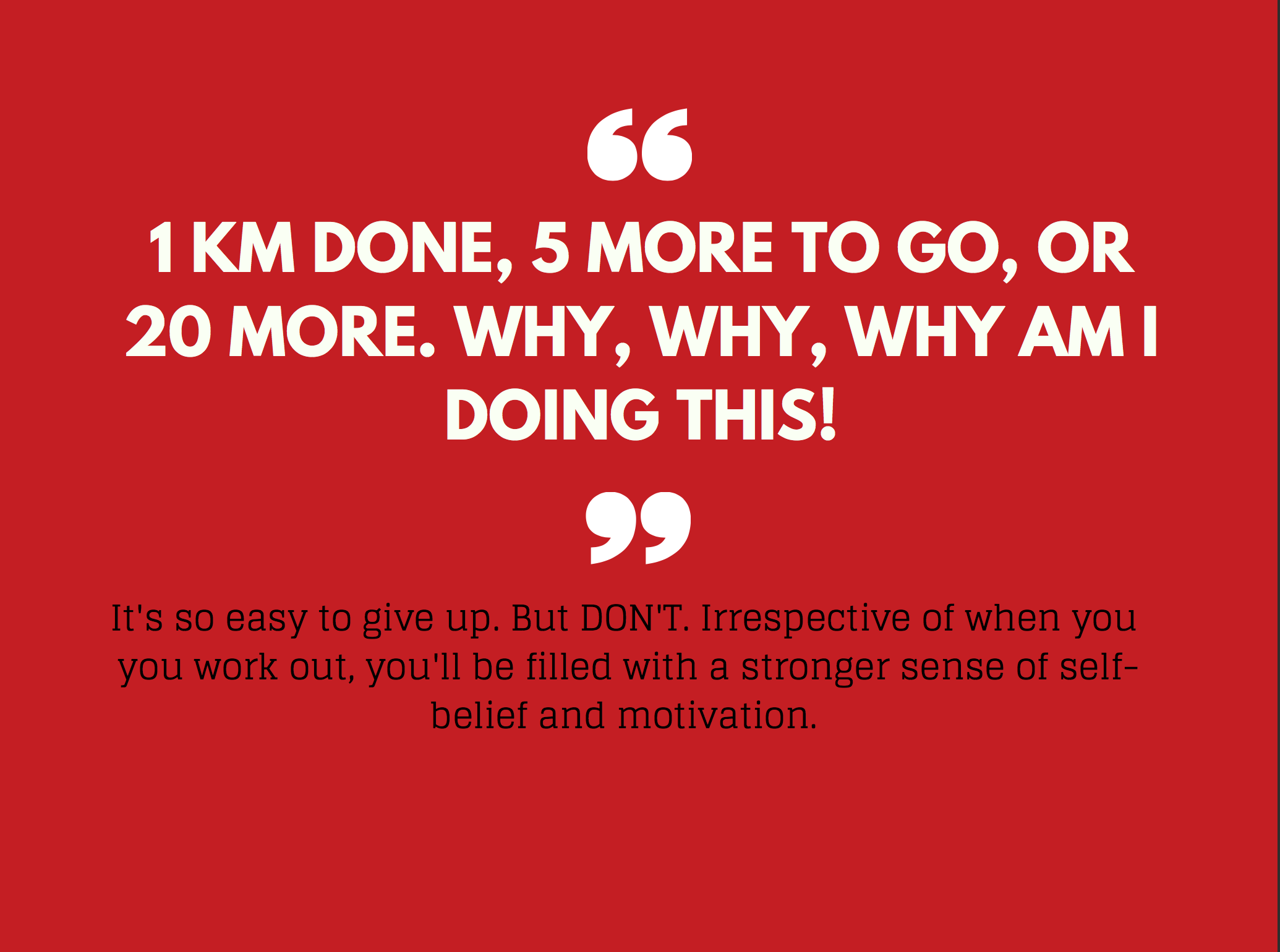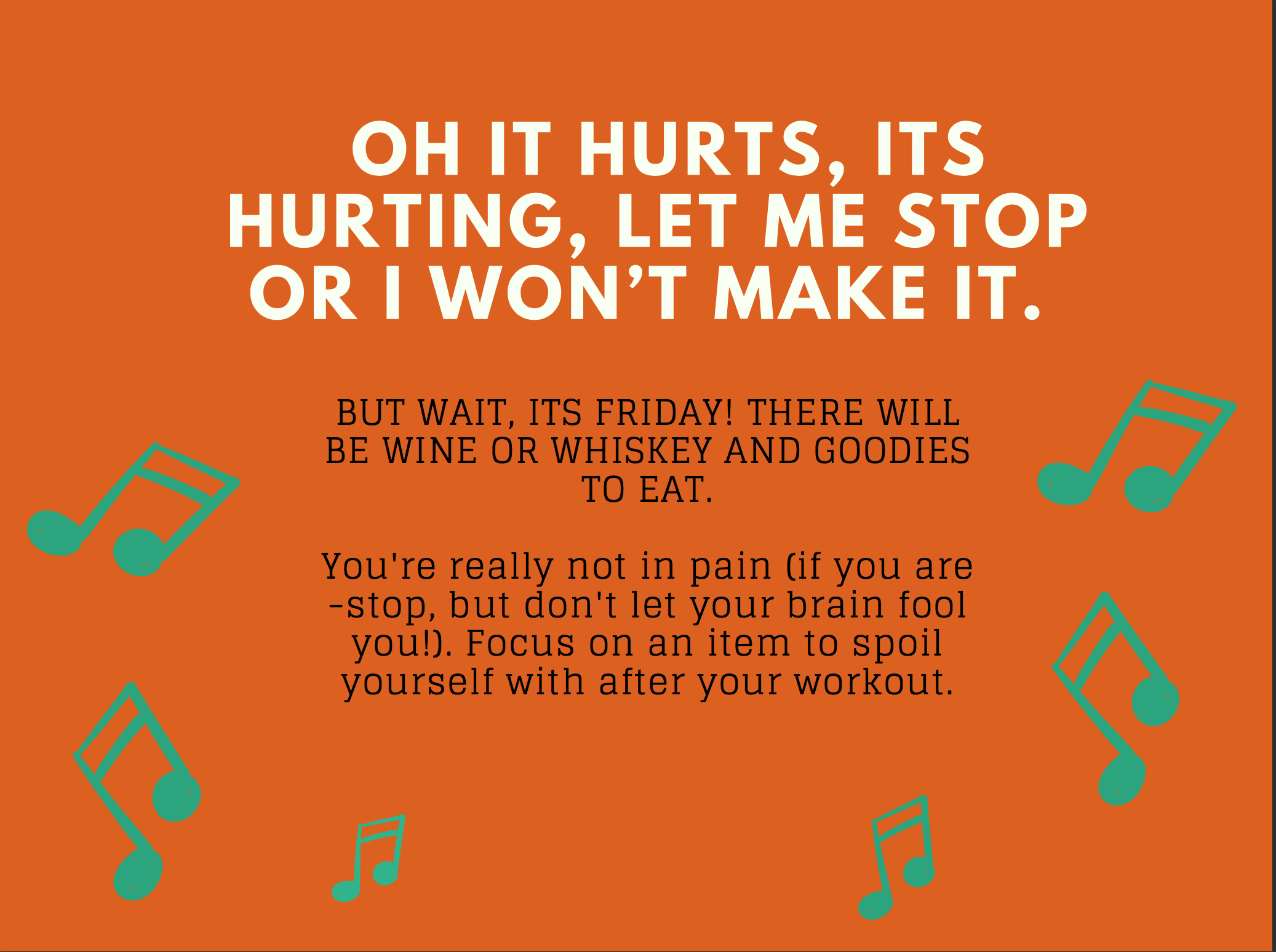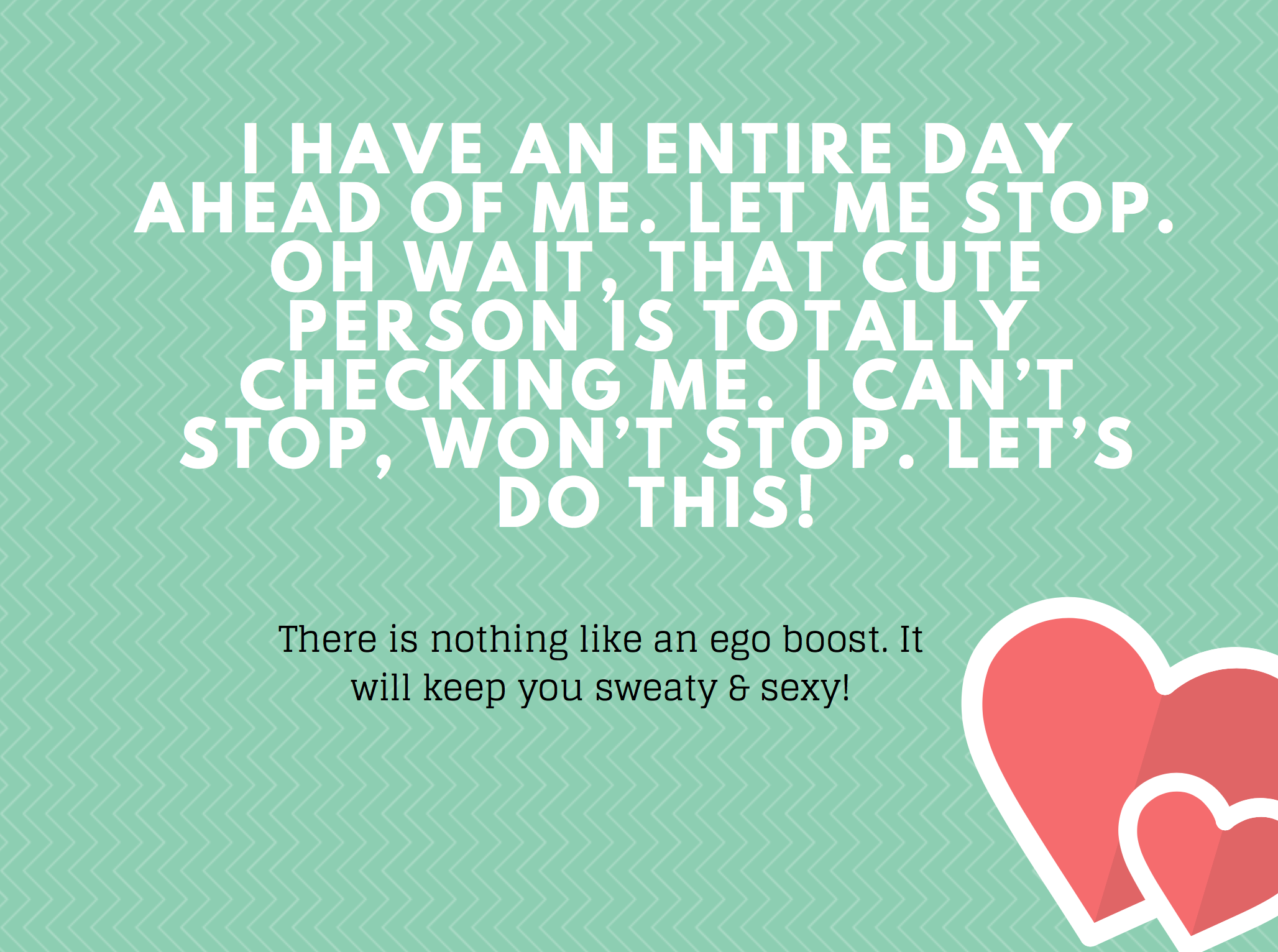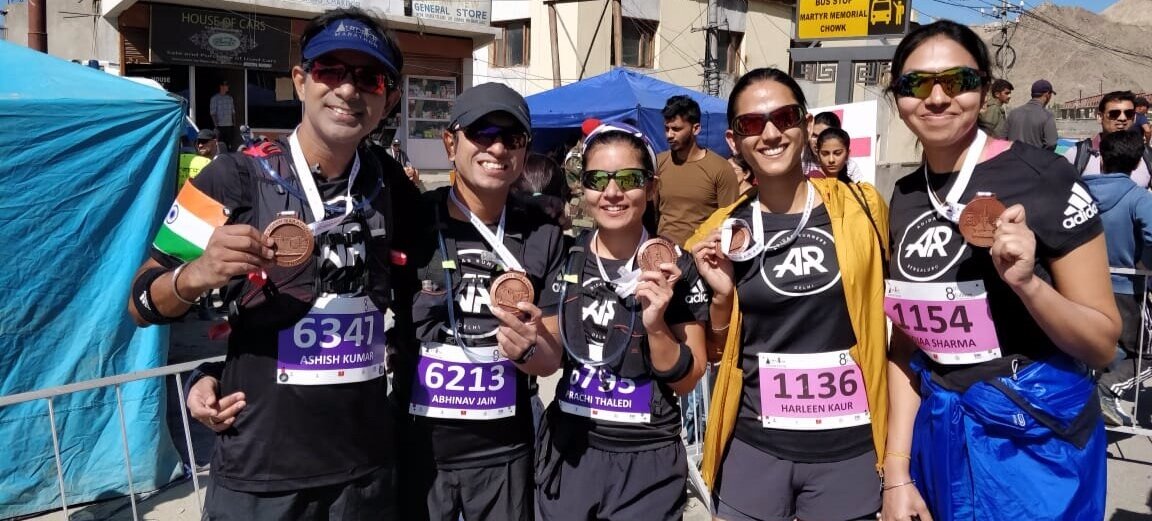Beast Mode Success - Banish these 5 thoughts
We know that working out is really difficult to do, especially if you are new to it or going back to a routine after some time.
Is your brain constantly judging you for making your body do things like burpees, or run at ridiculous timings?
Hang tight, don’t let the mind overcome your honest endeavors to turn your Beast Rabbit mode off.
We’ve faced these wars with our brain for decades and we’ve compiled our 5 most entertaining thoughts that cross our minds during a tough day in the gym, at home or during a run.
How many of these can you relate to? Comment & tag your friend
Remember, the sense of accomplishment after your 10 sets of exercises or 15 minutes on the elliptical and even 30 minutes of walking and yoga makes you feel on top of the world.
Your increased energy levels, thanks to the higher levels of insulin and serotonin, help you get into that positive frame of mind.
You begin your day or end it, depending on when you work out, with a stronger sense of self-belief and motivation.
FitRabbits, hop onwards to your next workout!
Easy hacks to unleash your fittest self!
“Try to be like the turtle - at ease in your own shell.”
Have you been keeping off your fitness goals for too long? Do you want to get started, but don’t know how? Are you too busy to get the workout you need?
If getting started is the biggest hurdle, this article might be just what you need right now.
I. Set those Goals- Be your personal warrior
Each of us has different motivations to workout. Brooke Shields once wanted legs like Steffi Graf while Madhu wanted to stay active around his 2 year old and Neha wanted to go from couch to 5K in 6 weeks.
Whatever your goal, believe in it. Define your long-term goal and then make specific, realistic and time bound short-term goals.
Short-term goals should last four to six weeks. For example- working out 3 times a week for a beginner.
Long-term goals are the end goal, spanning a few months and close to a year. Things like living healthily, lowering cholesterol, losing ten kilos or more (the right way, of course), running your first-half marathon or a marathon, etc.
Remember, that your goal has to work for you- it's your personal journey to become a better you.
Write your goals down- slap it on the fridge door, behind the bathroom door, in front of the closet, or wherever you do your morning thing.
II. Plan your activities for heart-thumping fitness
Identify your favourite fitness-related activities- is it the serenity of yoga that appeals to you, or the music thumping beats in a spinning class or just the breeze on your face during a walk or run or all of them?
Find the activity or the set of activities that get your feet moving and your energy levels up.
Figure out how you'll follow these activities. Sign up to classes, find a training plan, etc.
Set some achievable challenges during each activity. For example, if your goal is to run a 5K, start with walking for 25-30 minutes each day and vary your speed and distance as you get more active. Add a few lunges, crunches and pushups along the way.
III. Time - it's precious!
We’re all stressed for time in today’s busy life. To discover your new rabbit-self, you'll have to get into a routine. Routines slowly help form habits, and the benefits can range from stress relief to regulated blood sugar levels to lower risk of heart disease. Start young, stay young!
Decide how much time you'd like to dedicate on daily and a weekly basis.
Setting some time aside can help you stick to your routines and boost your confidence in the workout or the activity of choice.
Pick a time and stick to it. You can always add to your basic routine and mix your workout to make it more fun in future.
Research suggests adults require 30 minutes of physical activity a day. But dont worry if you cant squeeze in 30 mins in one go. Split it into 15 min sessions and you go for it!
IV. Reward yourself regularly- carrots are important.
Some people are motivated to exercise because they genuinely love it. But if you are one of those people who doesn’t, then rewarding yourself once in a while will drive your motivation to stick to your goals.
Rewards are very personal and vary from one person to the other. You can set up your own rewards and frequency.
Small(daily) rewards :
Put Rs100 in a jar every day you workout (building into a larger reward)
Watch your favourite TV show (only) on days you workout
Open WhatsApp only after you’ve finished your workout
Bite into some dark chocolate after 30 minutes of active workout
Medium (weekly, fortnightly, monthly) rewards:
Watch a movie / game
Shop for one frivolous item online
Get a massage
Eat your favourite dessert
Longterm (3, 6, 12 months) rewards :
Vacation with friends
Splurge on an outfit / watch / shoes
Indulge in a 5/7/9 course meal
Plan something with the kids (and let them know. They’ll ensure you get your workout!)
V. Clean your Diet
Studies show that not only is fast food bad for long-term health outcomes, it can also cause sluggishness, lack of motivation and reduced performance in our day to day lives.
Moving to a balanced, nutritious diet goes hand-in-hand with a good workout as it increases productivity, enhances mood and helps in losing or controlling body weight.
In India, we have plenty of healthy breakfast options like roti-subzi, poha, upma, idli-chutney etc that one can make in minutes. Add freshly chopped carrots, beans etc to make them even more interesting.
Getting started is really a mind game. Follow the process and you will start to see the results. Sometimes, pairing up with a friend, sharing your goals publicly or simply challenging yourself to a 21 day NO MISS workout could do the trick.
Do you workout regularly? What has your first experience been like? Tell us more in the comments section below!
Experience a rewarding race day!
You’ve signed up for your first race- a half marathon? Congratulations! It can be a life-changing event. For some people, the experience will make you hungry for more. The distance tests you mentally and physically.
Here are my top 5 recommendations to have a fabulous race day!
Trust your training: Quality over Quantity.
You must follow a training plan spanning at least 10-12 weeks, featuring days of different intensities & workouts. A training plan can be customised by a coach (like me) or you can download one from the internet.
Avoid overtraining – if your plan says 4 km at a certain pace, follow that.
Two weeks before the race, bring down your weekly mileage by 60-40% (called taper).
Pay attention to your recovery days - this will allow your body to recover and bring you one step closer to optimal race day performance!
Training with a group or a buddy will keep you excited, accountable and motivated.
Caution: Nearly every runner will have an opinion on training, etc. You need to decide what suits your personality and stick to it.
2. Go the distance: Weekly long runs and race pace runs are key.
Stay focussed on getting proper mileage before your race. A half marathon is not a casual distance, your body needs to learn to endure.
Spend time on your feet during those weekly long runs. You can progressively go longer, every week. Remember to focus on your breathing & posture. This will power you through the final kilometres.
Run at least one 17-19 km distance, at least 2 weeks before your race.
Try and do speed workouts, at least once a week to learn your race pace. This will help you get used to running fast and not get overwhelmed on race day.
3. Fuel right: Practice during training, nothing new on race day.
Running a half marathon is stressful for your body and it is important to know what fuelling and hydration options keep you from shutting down, well in advance.
During your training runs (long runs, specially) try different types of energy gels and sports drinks. This will help you understand what suits you. I recommend the Unived RRRUN range of products.
Don’t forget your pre-race and post-race fuelling. Find meals that are easily digestible and help you optimise your recovery period.
On race week, try nothing new. Tried and tested meals and drinks are best.
Carb loading-2 days before the race, you should get about 60-70% of your calories from carbs at breakfast, lunch and dinner. Best food options: potatoes, rice, fruits, vegetables, whole grains.
On race day, get about 500 calories before your race. I eat oatmeal and a banana and wash it down with some tea.
During the race, sip water at every aid-station but you don’t have to drink the entire cup. Take a gel every 40 minutes of activity (recommended).
4. Slow and steady wins the race.
A week before race-Learn as much as you can about your chosen race course – is it hilly or flat? What will the weather be like?
Before the race, make sure you have tried and tested your running shoes (at least 50 km mileage done), apparel and watch. Lay out your race gear before you go to bed. Keep the safety bins with your bib.
Cut your toe nails to avoid blisters, use Vaseline/anti-chafe balm, nipple bandages to prevent any blisters/cuts/chafing.
On race day-
Get to race start at least an hour before. Visit the toilet. Warm up properly. Take deep breaths. Carry a small bottle of water with electrolytes, sip while you wait. It will calm you.
When you start your race, tell yourself to hold back, go steady and easy. Try to run your first half slower than the second half (called a negative split). Take it slow. Your body will be grateful, later.
Stay calm, be mentally tough, and talk to yourself. This helps me immensely. Don’t let people passing you overwhelm you. Remember how you've worked through fatigue during training and how you can do it again. Stay positive and visualising yourself crossing that finish line, strong!
Break up the race into smaller segments. It will make the distance feel more manageable.
5. Enjoy the day, soak it all in.
If it’s your first time or your tenth, remember to revel in your run. Worrying about time will stress you out and you’ll not be able to pay attention to the incredible energy at the event. I’ve learnt this the hard way, over 5 full marathons.
So, just enjoy the feeling of pride at the beginning of your race. Hold to that feeling through your race distance. If you feeling like it, high five spectators, thank race volunteers, enjoy the scenery, smile for the photographers!
Your training runs will prepare you to run the first 19km easily, and the adrenaline and excitement of completing all of that distance will carry you to the finish line.
After your race is done, wear your medal with pride, get some food inside you, spend time with your training buddies or running community. Take photos, smile, and then head home and get that well deserved rest.
This article was also featured on Men’s Health India website.
Running Injuries & Remedies
The reality for every runner’s journey is you will hit a few snags along the way. If overlooked, these can become serious injuries that can force you to take a long break from running. However, we can easily avoid them by paying due attention to your running basics.
Here is a complete breakdown on the 5 most common running injuries:
1. Runner’s Knee or Patellofemoral Pain Syndrome (PPS)
Considered to be the most common running related injury, PPS is the pain around or behind the patella (kneecap) during or after your runs.
Cause(s) - Repetitive running/over training, biomechanical issues or muscle imbalances – weak glutes, hips, tight hamstrings, quadriceps. PPS occurs when your weak or inflexible muscles can’t control hip and thigh movement or give enough support to the patella.
Prevention - Pay greater attention to your running form, strengthening and stretching routine. Reduce your running mileage, avoid downhill running and opt for softer surfaces- treadmill, grass, elliptical training or swimming. Icing, taping and some pain killers may help.
Incorporate focussed leg strengthening workouts - at least 2 times a week.
Improve running form to shorten stride length and land with knees slightly bend.
Remember to warm-up & cool-down and also to stretch and foam roll your hip flexors.
2. Shin Splints or Medial Tibial Stress Syndrome
This injury, plagues new runners or those getting back into running. When the muscles and tendons around your shin bone (tibia) get inflamed, it causes a stabbing pain in the front/outer or inner side of your leg.
Cause(s) - Doing too much, too soon. Also, your running gait, wearing incorrect shoes for your arches (high or flat) or worn-out shoes can cause this.
Prevention - At the first sign of pain, stop running for a few days. Ice the shins for 15-20 minutes. Get a blood test as your vitamin D and calcium levels may be low. You may need to get new sneakers with better cushioning, stability or insoles that support your arches.
Remember to build mileage slowly- no more than a weekly increase of 10%.
Strength work should focus on hips, calves, core and include lateral movements.
Don’t forget to stretch your calves, hip flexors and back, too.
3. Iliotibial Band Syndrome (ITBS)
The iliotibial (IT) band is the connective tissue that stretches from the pelvic bone, along the outside of your thigh bone (femur) and connects to your knee. When the IT band gets inflamed, you will feel pain on the outside of the knee, specially while running.
Cause(s) - Sudden increased mileage, weak muscles- glutes & hips- and too much downhill running.
Prevention - Stretching, strength training and foam-rolling. You need strong gluteal muscles to stop unnecessary shifting of your pelvis and femur that causes ITBS. At the onset of pain, please stop running and spend a few days either swimming or using the elliptical trainer.
Strength train at least 2 times a week - focus on hip-abductors and gluteal muscles.
Foam rolling twice a day or daily stretching with focus on hips is beneficial.
Re-asses your running form (Get a running coach!)- Perhaps shorten your strides.
4. Plantar Fasciitis (PF)
When the connective tissue in the soles of your feet that support your arch (Plantar fascia) get inflamed, it causes pain in the arches of your feet, close to your heel. PF is usually at its worst when you get out of bed in the morning.
Cause(s) - Excessive over-pronation or supination, weak core muscles, tight hip flexors, calves and feet. Runners with very high or very low arches are susceptible. Sudden increase of mileage causes it, too.
Prevention - Rest, icing, calf rolling and stretching, and foot-strengthening exercises. Wear shoes with extra cushion and get lots of rest.
Use a frozen water bottle, tennis or golf ball to roll the balls of your feet, twice in a day (I’ve tried and tested this!).
Strength train your core, calves four times a week and stretch daily.
Recovery time can range from three months to a year, so be patient!
5. Achilles Tendonitis (AT)
When the tendon that connects the two major calf muscles to the backs of your heels, is stressed or is weakened, it causes pain (AT). Don’t ignore, as it can get very serious and may take up to six months to go away!
Cause (s) - Bad running form, rapid increase in mileage (hills and speed work) or a naturally flat foot. Runners with a weak posterior chain of muscles (calves, hamstrings, glutes), different leg lengths and other muscle imbalances are highly susceptible.
Prevention - Proper stretching, focussed strength training and the good old R.I.C.E. (rest, ice, compression and elevation) technique.
Wearing supportive shoes, especially if you severely pronate will be helpful.
Strength work should include- eccentric heel drops, calf raises, burpees, squats, lunges.
If you notice, nearly all injuries are a result of overreaching your goals and beating your body. So please pay attention to your running posture.
Yes, I’ve suffered from some of these but have managed to come back fitter and stronger.
Here is the link to tried & tested warm-up, cool-down and strength training routines.
This article was written by me for Men's Health India. It is featured there, too.
The Running Basics
Have you decided to start running or complete your first race this year?
Running well can be daunting. Worry not, here’s my list of top 6 things to ace your running & fitness routine!
Read moreRunning Form Basics
Running better is not necessarily about running faster.
Here are 5 good posture tips that will help you run more easily, have fewer injuries and breathe more easily.
Read moreWhy eating breakfast is so important!
Actually, it’s not a big deal. But eating a good breakfast has many advantages and it helps to know them before you choose otherwise. Indian breakfast or ‘nashta’ has a good mix of carbs-protein-fats and works great to start off your day! Since the body gets its nutrition after a long gap, the longest gap for many of us, it not only replenishes the body but also gets the metabolism started.
Some of the often stated advantages of eating breakfast include:
Eating a breakfast rich in protein and fiber can give you a solid boost of energy to carry you through the day.Cortisol (a stress hormone) levels peak just before we wake up and continue in that state till we consume food. Supplying the body nutrition breaks this cycle and helps keep cholesterol and heart disease at bay in the long run.
- Tip: Mix dryfruits, nuts in curd for a delicious quick-fix.
Our body needs a certain amount of calories to function efficiently during the day. Instead of having just lunch and dinner, the additional meal helps break the intake by a third, at least.
The body starts breaking glucose for energy within 6 hours of your meal.Imagine skipping breakfast and jumping straight to lunch. The body does not have any food to metabolise. Breakfast breaks that long gap and kick-starts your body's metabolism.
When we don’t eat for long intervals of time, we risk having more “hunger hormones”, like ghrelin, which may lead to overeating during your next meal. Breaking your meals into smaller portions is the answer, and what does that better than breakfast?
Skipping breakfast over larger periods of time may decrease the glucose and insulin concentrations. Glucose is a critical source of energy for the brain, and a decrease may lead to functioning at sub-optimal capacity. TipRabbit: Small portions of (healthy) snacks between meals also prevents cravings from going out of hand.
With reduced overeating and improved metabolism, your weight loss goals are closer than ever.
Tips / Fun Facts
- Tea is the worlds most popular drink - beating coffee, juice and beer ;)!
- The Breakfast club - has nothing to do with breakfast.
- Yogurt/Curd is an excellent addition to your breakfast. 100g of curd has ~60cal and is ~85% water!
In conclusion, keeping yourself hydrated, making breakfast a part of your daily routine and choosing healthy options can go a long way in helping you get and stay fit.
Best days are only a simple breakfast meal away.
Cooling Down
So, you warmed up for your workout, then had a great time pumping some extra beats during your walk/run or at the gym. Now, make sure you spend a few minutes to cool down.
Why?
During a workout, no matter at what level- professional, amateur or novice, the body's muscles, tendons and ligaments undergo some level of stress. Therefore, an effective cool-down enables the body to move from the exercise state to that of steady rest.
Our top favourite exercises to cool down:
Warm Up is Essential
Before any workout - running, zumba, cycling, etc. - an effective warm-up is crucial. Targeted warm-up exercises help prepare the heart muscle and circulatory system, improve performance, reduce risk to injury and increase muscle elasticity and flexibility of the tendons and ligaments.
Simply speaking, key movements help warm your body and be prepared for the increased demand of vigorous exercise.
Tip: Stretching is not recommended as one can tear cold muscles.
We believe in somewhat dynamic warm-up exercises.
Here are some key moves for you to begin your workout with. Super easy, highly effective and fun to do!
You're now all set to begin the workout of your choice.
If you've 30 minutes & want to try something fun, check out our 5 easy moves to feel like a rabbit.
SIX moves to feel like a Rabbit!
So, you've been contemplating about moving off the couch and getting some exercise. But, your brain and your heart are at odds- your brain asks you to get more info on how to begin this amazing, fulfilling journey; but your heart says no can do. Here's a quick way to get moving!
Read more